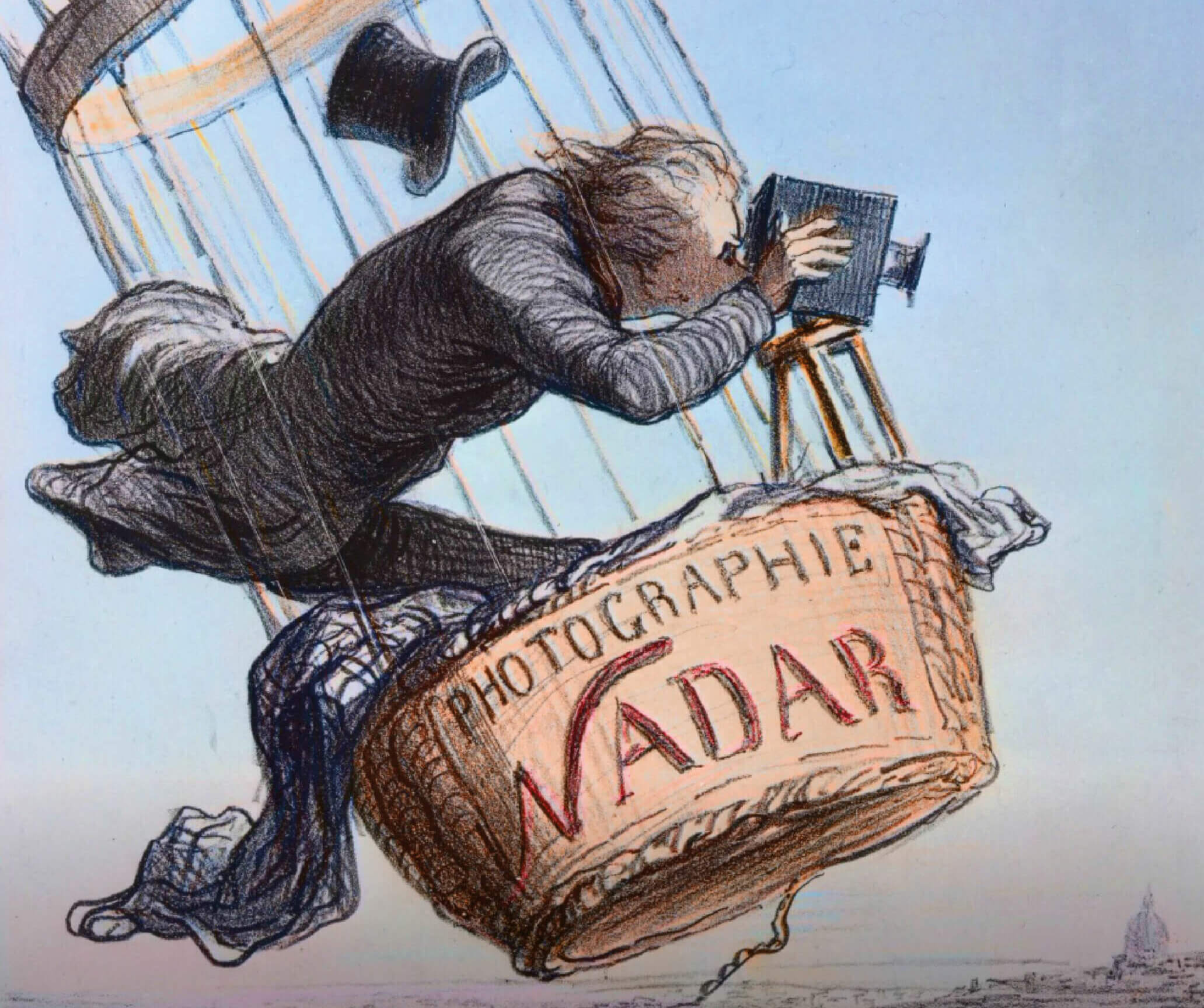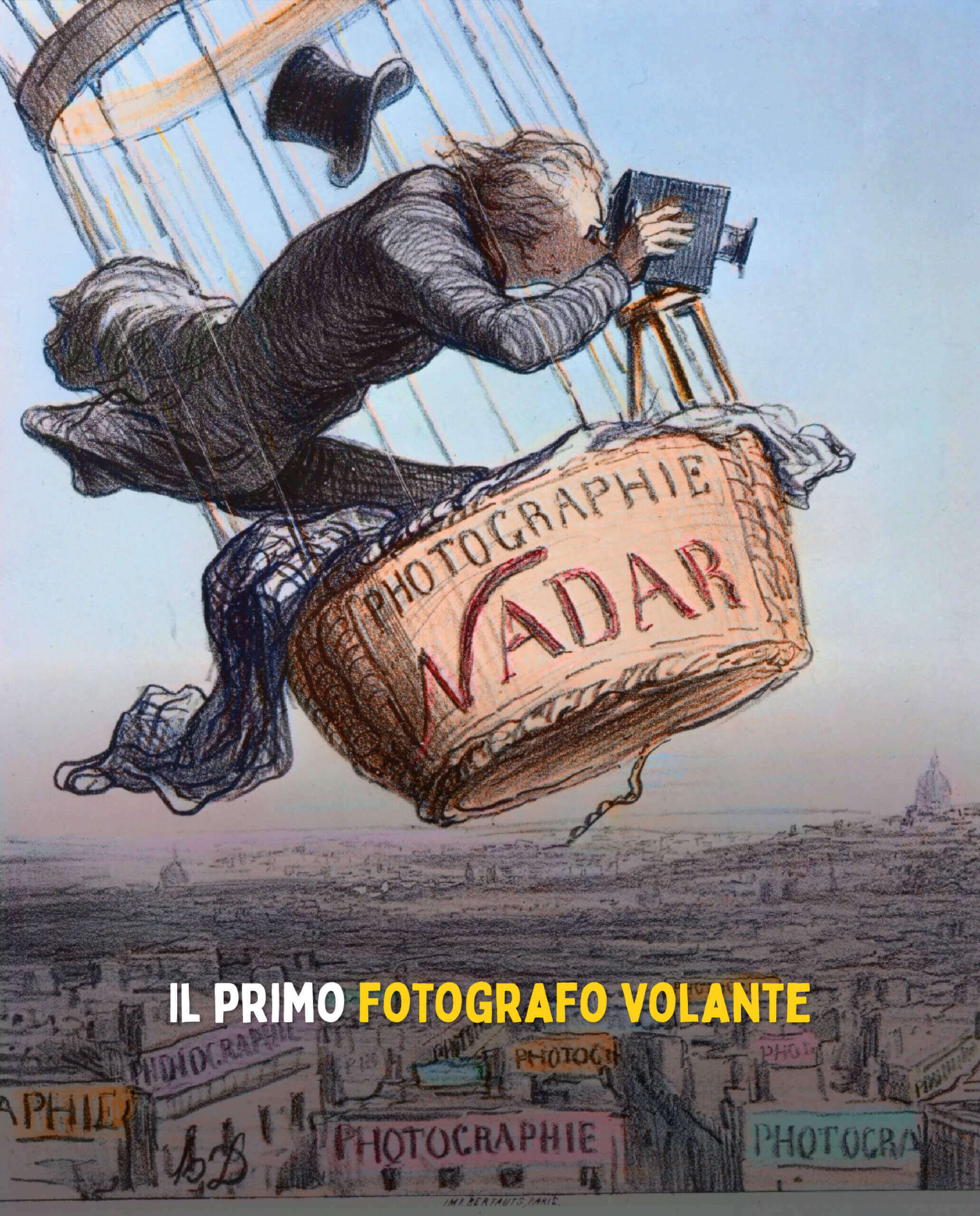Nadar: the first flying photographer
Category:

DON’T CALL THEM DREAMERS
Madman, visionary, genius, call him whatever you like but Gaspard-Félix Tournachon, aka Nadar, twisted the gaze of his era. Writer, draughtsman, photographer, inventor, Nadar was curious and eclectic, able to see where others stopped: he was the one who helped the Impressionists organize their first exhibition when no one wanted to exhibit their work; he was the one who took the first photograph of underground Paris using artificial light; and he was the one who took the first photograph of the French capital from above.
For the first time, there was proof of what it meant to fly, to take one’s feet off the ground and see the world from another point of view: man’s dream was sealed with the first aerial photograph.
After the first attempts on small hot air balloons, in which Nadar struggled to even fit in the basket, the photographer thought he needed a more stable solution.
Hence the idea of making the Giant, as he called it, a 60-meter-high balloon with a 19,000-meter silk envelope, at the time the largest balloon in the world.
“It was a flying cottage. Made of wicker, two stories high with a balcony on the roof, it contained six compartments: two cabins, a print shop, a photo office, a toilet and a storage room.”

Among the most illustrious flight companions were Napoleon III and the king of Greece.
The balloon flights proved to be exciting but also difficult to manage; the balloon was difficult to maneuver and especially to land, descending so abruptly as to endanger the safety of the passengers who several times risked crashing to the ground.
Despite this Nadar never gave up, spent insane amounts of money and continued to dream of flying machines.
Together with Jules Verne, he founded the Society for the Encouragement of Air Navigation with Heavier-than-Air Machines: among the various prototypes they envisioned was that of the helicopter.
Verne dedicated to his friend his work From the Earth to the Moon, in which one of the protagonists Ardan is Nadar himself, who makes the first flight to the moon, 100 years before the first moon landing.
Verne, like his friend Nadar, was able to imagine things that their contemporaries could only conceive of in science fiction books.
Pictured is “Nadar,” Illustration by Honorè Daumier, 1863.